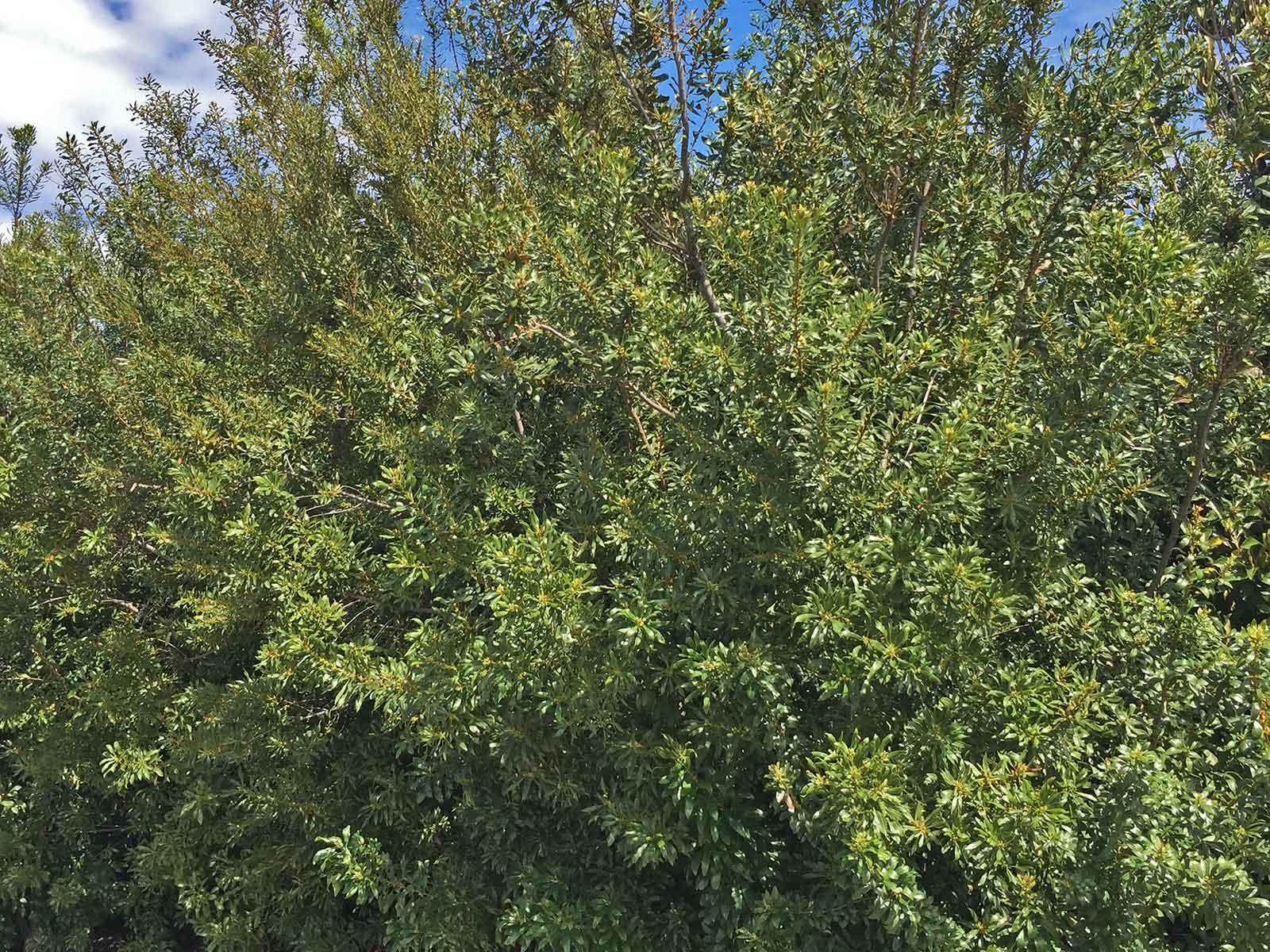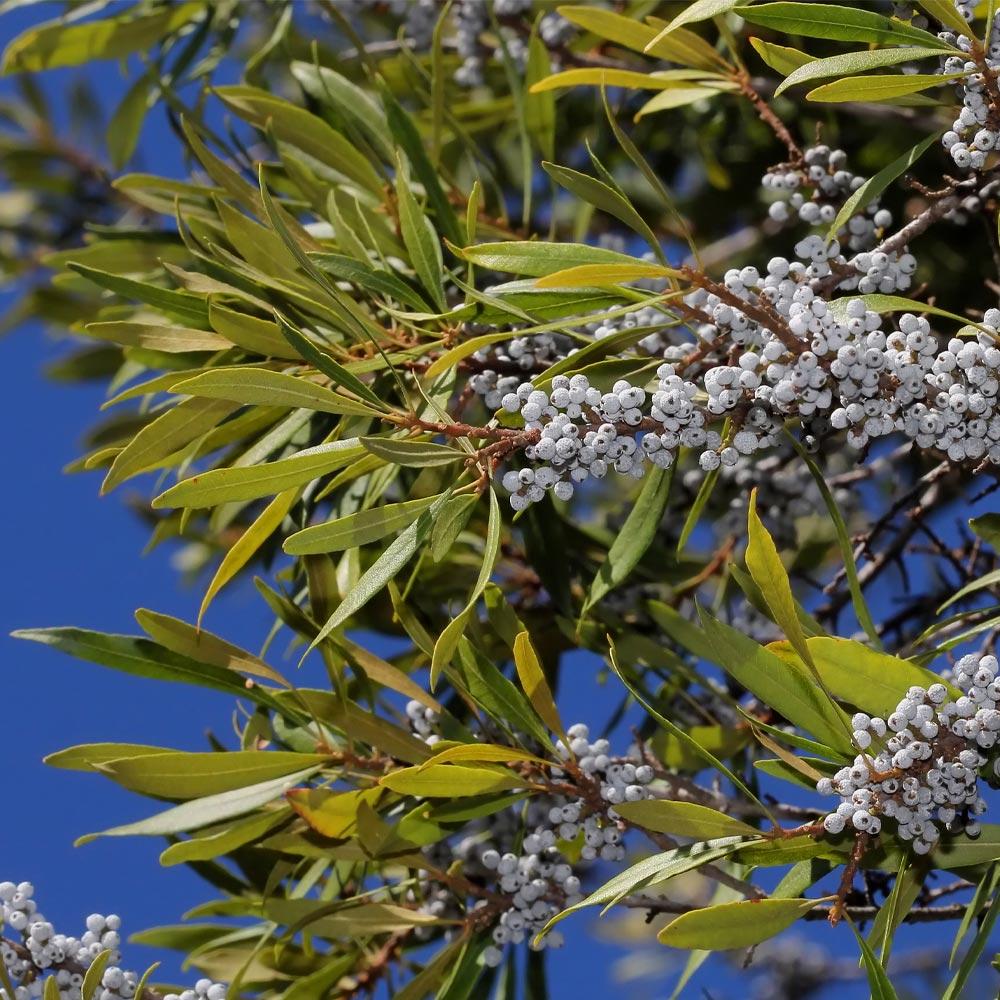

Shearing is leveling the surface of a shrub using hand or electric shears. The best way to begin thinning is to begin by removing dead or diseased wood. This may be done to open up the interior of a plant to let more light in and to increase air circulation that can cut down on plant disease. Thinning involves removing whole branches back to the trunk. Doing this avoids the need for more severe pruning later on. Pinching is removing the stem tips of a young plant to promote branching. Types of pruning include: pinching, thinning, shearing and rejuvenating. Know the culture of the plant before you buy and plant it!
#WAX MYRTLE BUSH FULL#
Plants able to take full sun in some climates may only be able to tolerate part sun in other climates. Partial sun receives less than 6 hours of sun, but more than 3 hours. Full sun usually means 6 or more hours of direct unobstructed sunlight on a sunny day. The only exception is when houses or buildings are so close together, shadows are cast from neighboring properties. Areas on the southern and western sides of buildings usually are the sunniest. Many of these plants will do fine with a little less sunlight, although they may not flower as heavily or their foliage as vibrant. Applications made at that time can force lush, vegetative growth that will not have a chance to harden off before the onset of cold weather.įull sunlight is needed for many plants to assume their full potential. It is best to avoid fertilizing late in the growing season. Excess nitrogen in the soil can cause excessive vegetative growth on plants at the expense of flower bud development. Fertilizers that are high in N, nitrogen, will promote green leafy growth. If one or more nutrients is low, a specific instead of an all-purpose fertilizer may be required.

A soil test can determine existing nutrient levels in the soil. Shrubs and other plants in the landscape can be fertilized yearly. Trees need to be fertilized every few years. Take a visual inventory of your landscape. How-to : Fertilization for Established PlantsĮstablished plants can benefit from fertilization. Look for a fertilizer that has phosphorus, P, in it(the second number on the bag.) Apply recommended amount for plant per label directions in the soil at time of planting or at least during the first growing season. Young plants need extra phosphorus to encourage good root development. Plant Care Fertilizing How-to : Fertilization for Young Plants Tolerances: deer, heat & humidity, rabbits, seashore, slope, wind,īloomtime Range: Mid Spring to Late SpringĪHS Heat Zone: Not defined for this plant Plant Category: landscape, shrubs, trees,įoliage Characteristics: fragrant, medium leaves, evergreen, Google Plant Images: click here! Characteristics Cultivar: n/a Native on the coastal plain, from Maryland to Texas. pensylvanica and deer do not seem to bother it. It displays the same salt tolerance as M. It is quite adaptable but flourishes with good soil and adequate moisture. It is a fast growing shrub, and the new foliage has the lovely ‘bayberry candle’ scent. It can be used as a screen, and can also be limbed up into a small tree form. It commonly grows from 10 to 15 feet high and wide, occasionally 20 feet. They may contract leaf athracnose and a type of leaf mosaic. The leaves are narrower, more of an olive green, and evergreen, suffering heavy leaf browning in the cold.

Myrica cerifa, or Southern Wax Myrtle, is similar to Northern Bayberry, but is a heat loving evergreen species, suited to warm climates.


 0 kommentar(er)
0 kommentar(er)
